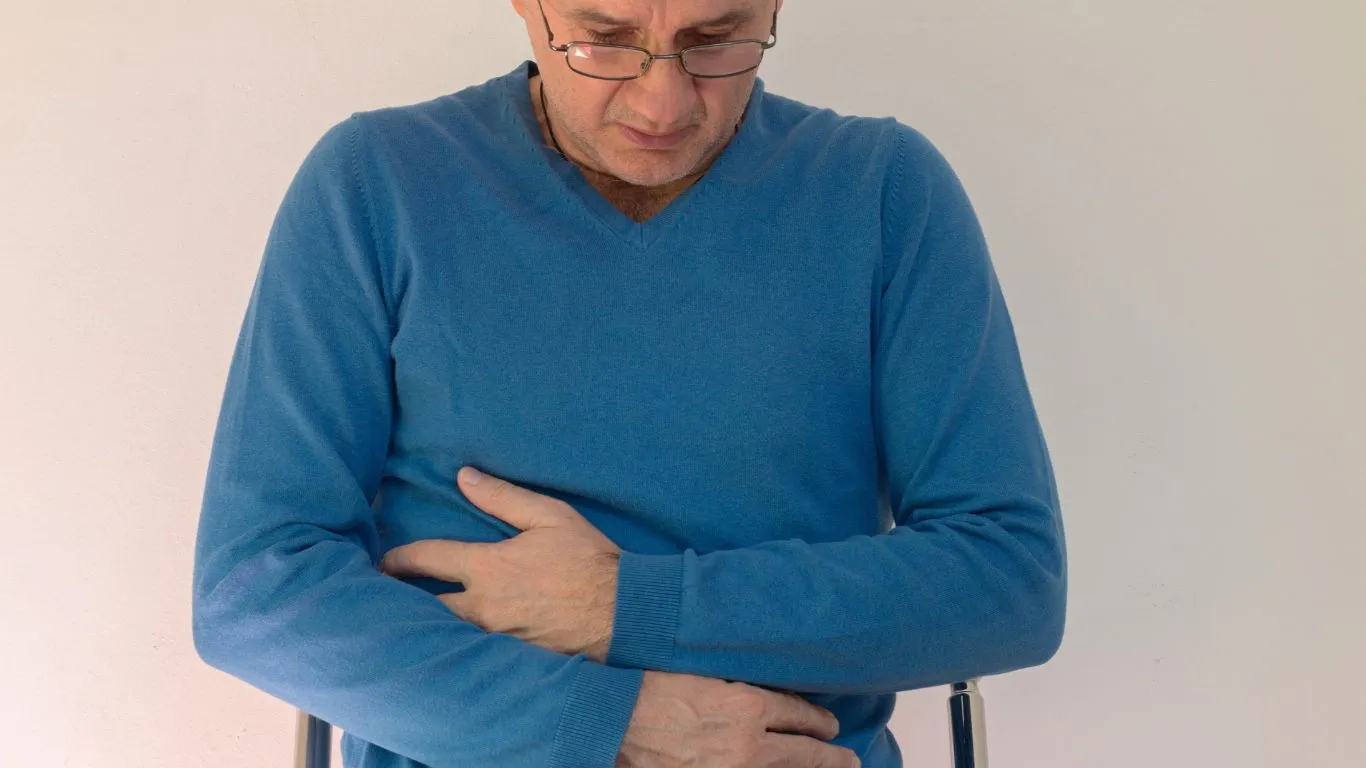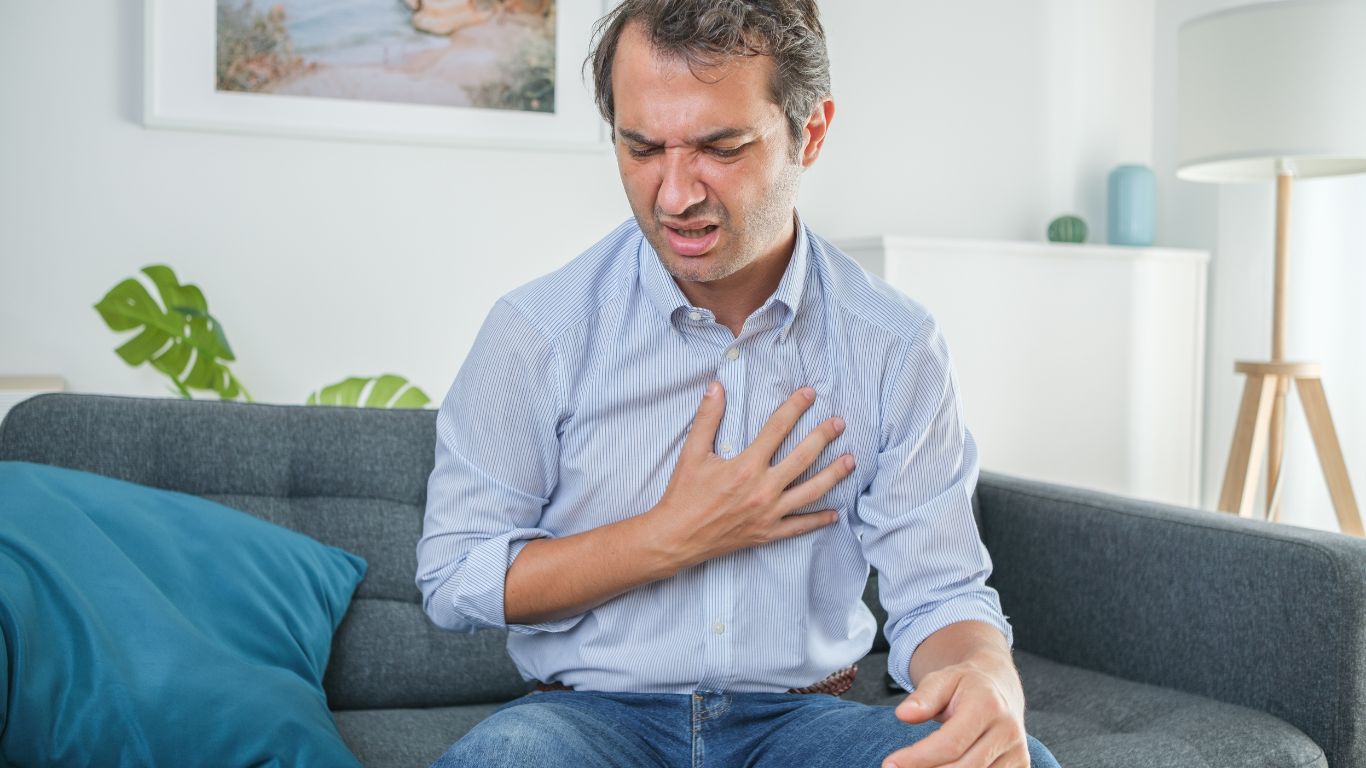Understanding GERD and Upper Back Pain: Causes and Relief
If you’ve ever dealt with GERD and upper back pain at the same time, you know how confusing and uncomfortable it can be. As a Medical Assistant working in a busy Gastroenterology Clinic, I’ve seen firsthand how many patients come in focused on their heartburn, only to mention this nagging pain between their shoulder blades that they didn’t expect. It’s one of those symptoms that often flies under the radar but can really impact your daily life. So, what’s going on here? Is your upper back pain really connected to your acid reflux, or is it something else entirely? Let’s unpack this together with some real-world insight and useful info.
Understanding GERD: More Than Just Heartburn

GERD, or gastroesophageal reflux disease, is essentially when stomach acid flows back up into your esophagus, irritating the lining and causing that classic burning sensation. Most people think of GERD as just “heartburn,” but it’s way more complex. Besides the typical symptoms, GERD can cause a range of discomforts, including some surprising ones like chest pain, chronic cough, and yes — upper back pain.
From my experience in the clinic, patients often don’t mention upper back pain right away because they don’t associate it with their digestive system. Yet, it’s a symptom that can really help clue in healthcare providers about the severity and nature of their reflux issues.
Why Does GERD Cause Upper Back Pain?
Here’s the deal: the esophagus and the nerves that relay pain signals to your brain are closely linked to muscles and areas around your upper back and shoulders. When acid reflux irritates the esophagus, it can trigger referred pain — meaning the discomfort is felt somewhere other than the actual source. So, what feels like muscle pain or strain in the upper back might actually be your body’s way of signaling GERD trouble.
Plus, persistent reflux can cause inflammation that extends beyond the esophagus, affecting nearby tissues and muscles, which might explain the ache or tightness you experience. From working with patients who had no other obvious cause for their upper back pain, treating the reflux often helped alleviate that pain, confirming the connection.
Recognizing the Signs: When Is Upper Back Pain Linked to GERD?

One challenge is that upper back pain can come from so many different places — muscle strain, poor posture, arthritis, or even cardiac issues. So how do you know when your upper back pain is actually related to GERD? Here are some clues I always look for when patients describe their symptoms:
- Timing: Does the pain flare up after meals, especially after heavy or spicy foods?
- Associated symptoms: Do you also have heartburn, a sour taste in your mouth, or difficulty swallowing?
- Location: Is the pain centralized between the shoulder blades or spreading along the upper spine?
- Response to treatment: Does the pain improve when you take antacids or medications prescribed for GERD?
When these patterns line up, it’s a strong sign that your upper back pain could be a less obvious symptom of acid reflux. I remember one patient, a middle-aged woman, who came in complaining mostly about persistent upper back stiffness. It wasn’t until she mentioned occasional heartburn that we explored GERD as a cause — and once she started reflux treatment, her back pain improved dramatically.
Other Possible Causes to Rule Out
While GERD can cause upper back pain, it’s important to rule out other serious causes. If you ever experience:
- Sudden, severe chest or upper back pain
- Shortness of breath or dizziness
- Pain radiating down your arms
Seek emergency care immediately — these could be signs of a heart attack or other cardiac emergencies. In the clinic, we always emphasize this because it’s better to be safe and get a thorough check-up.
Once those serious issues are ruled out, then you can work with your healthcare provider to explore GERD as the root cause, especially if your symptoms match what we’ve discussed.
How to Manage GERD-Related Upper Back Pain Effectively

From my time working in the gastroenterology clinic, one thing I always emphasize to patients is that managing GERD and upper back pain is often about addressing the root cause — the acid reflux itself. Treating the back pain without tackling GERD won’t get you very far. The good news? There are plenty of practical steps you can take, many of which don’t require medication or complex procedures.
Here’s a rundown of some of the best strategies I’ve seen help patients find relief — both for their reflux and that stubborn upper back ache.
Lifestyle Tweaks That Make a Big Difference
You don’t have to overhaul your life overnight, but a few simple changes can significantly reduce reflux episodes and, by extension, the upper back discomfort linked to it. When patients ask me what to start with, I usually suggest:
- Watch what you eat: Spicy foods, caffeine, chocolate, and fatty meals are common triggers for GERD flare-ups. Reducing or avoiding these can ease symptoms.
- Eat smaller, more frequent meals: Overloading your stomach puts pressure on the lower esophageal sphincter (LES), the muscle that keeps acid from creeping up. Smaller meals reduce that pressure.
- Don’t lie down right after eating: Gravity helps keep stomach acid down. Wait at least 2-3 hours before reclining or going to bed.
- Elevate your head during sleep: Using a wedge pillow or adjusting your bed to elevate your upper body can prevent acid reflux at night, reducing irritation that might cause referred back pain.
- Maintain a healthy weight: Excess weight can push on your stomach and LES, worsening reflux. Losing a few pounds can bring noticeable relief.
I’ve seen some patients who, after just a couple of weeks making these adjustments, come back to the clinic amazed at how much their symptoms improved — including that nagging upper back tightness that had been bugging them for months.
When Medication Comes Into Play
Sometimes, lifestyle changes alone aren’t enough, especially if your GERD symptoms are moderate to severe. In these cases, working with your healthcare provider to find the right medication is key. Common options include:
- Antacids: Fast-acting relief for occasional heartburn but usually not enough for chronic symptoms.
- H2 blockers: Reduce acid production and are useful for mild to moderate GERD.
- Proton pump inhibitors (PPIs): Stronger acid blockers that help heal esophageal lining and reduce inflammation.
In the clinic, we always remind patients to avoid self-medicating long-term without guidance because improper use can lead to other issues. Plus, if upper back pain persists despite meds, that’s a signal to revisit the diagnosis or adjust treatment.
Physical Therapies and Posture: An Overlooked Angle

Now, here’s something not everyone realizes: your posture and muscle health can actually influence how GERD symptoms show up, including upper back pain. When acid reflux irritates the esophagus, it can cause you to unconsciously tense up your back and shoulder muscles, making pain worse.
In my experience, combining GERD treatment with physical therapy or gentle stretching routines can offer a double win. Improving posture relieves muscle strain, and reducing reflux tackles the root cause.
- Keep your shoulders relaxed and back: Avoid slouching, especially if you spend a lot of time sitting or working at a desk.
- Take regular breaks: Stretch your upper back and neck every hour or so to prevent tightness.
- Try gentle yoga or Pilates: These exercises strengthen core and back muscles, improving overall posture and reducing pain.
- Consider professional help: A physical therapist can tailor exercises to your specific pain patterns and help retrain muscle movements.
One of my patients, a software developer, was shocked to learn that his constant forward-leaning posture not only worsened his GERD symptoms but also contributed heavily to his upper back pain. After incorporating posture correction exercises alongside his reflux treatment, he saw a big difference in both discomfort and digestion.
When to See a Specialist for GERD and Upper Back Pain

Sometimes, despite your best efforts, symptoms just don’t get better. That’s when it’s time to see a specialist. In the gastroenterology clinic, I often help patients prepare for their appointments with detailed symptom logs and questions, because having clear info helps doctors tailor treatment more effectively.
Consider seeing a gastroenterologist if you experience:
- Frequent or severe heartburn that disrupts daily life
- Upper back pain that persists even with reflux treatment
- Difficulty swallowing or unexplained weight loss
- Symptoms that worsen over time or interfere with sleep
A specialist can order tests like endoscopy or pH monitoring to assess the severity of GERD and rule out other conditions. They might also explore whether your upper back pain could be linked to something else, such as musculoskeletal issues or nerve irritation.
From what I’ve seen, being proactive and open with your healthcare team makes a huge difference in managing these overlapping symptoms.
Long-Term Strategies to Prevent GERD and Upper Back Pain Flare-Ups

After seeing countless patients navigate the ups and downs of GERD and the frustrating upper back pain that can tag along, I’ve learned that the best approach is one focused on long-term habits rather than quick fixes. Sure, medications and acute treatments are necessary sometimes, but lasting relief comes from building a lifestyle that supports your digestive and musculoskeletal health.
One of the most important things I tell people is to treat their body like a team — if one part is struggling, it affects the rest. GERD and upper back pain often go hand-in-hand because of how interconnected our systems really are.
Consistent Diet and Eating Habits
From my experience, it’s easy to slip back into old habits when stress or busy schedules take over. But consistency is key. Some tips I recommend include:
- Keep a food diary: This helps you spot patterns of what triggers your reflux and discomfort. It’s surprisingly eye-opening!
- Prioritize whole, unprocessed foods: Fresh vegetables, lean proteins, and whole grains tend to be easier on your digestive system.
- Hydrate wisely: Drinking plenty of water is great, but avoid gulping down large amounts during meals, as it can increase stomach pressure.
In the clinic, patients who commit to these eating habits often report fewer reflux episodes and reduced muscle tension that contributes to their back pain.
Stress Management and Its Role
Believe it or not, stress is a huge player in both GERD flare-ups and muscle pain, including the upper back. When you’re stressed, your body releases hormones that can increase stomach acid production and make muscles tighten up — a double whammy.
In my daily work, I encourage patients to explore stress-reducing activities like meditation, deep breathing exercises, or even simple walks outdoors. These not only help calm your digestive system but also ease the tension in your back muscles that might be amplifying your pain.
Regular Movement and Exercise
While intense workouts right after eating can make reflux worse, staying active overall is a huge benefit. Light to moderate exercise helps:
- Improve digestion and metabolism
- Reduce excess weight that pressures the stomach
- Loosen tight back muscles and improve posture
One patient I worked with started gentle swimming sessions, which made a noticeable difference in both his GERD symptoms and the stiffness he’d had for years between his shoulder blades.
When to Seek Further Medical Attention

Even with all the right strategies, some cases of GERD and upper back pain need more intensive medical intervention. If you notice symptoms worsening or new issues emerging, don’t hesitate to consult your healthcare provider.
Some signs that warrant immediate attention include:
- Persistent or worsening upper back pain not relieved by standard treatments
- Unexplained weight loss or difficulty swallowing
- Signs of bleeding, such as vomiting blood or black stools
- Symptoms interfering significantly with sleep or daily activities
In the clinic, we sometimes recommend diagnostic tests like upper endoscopy or esophageal manometry to get a detailed picture of what’s happening inside. These tools help rule out complications like esophagitis, Barrett’s esophagus, or strictures, which can occasionally cause referred pain in the back.
The Importance of Follow-Up and Communication
One piece of advice I always share: keep a clear record of your symptoms and treatments. This makes follow-up visits with your doctor way more productive. Share how your upper back pain behaves in relation to your reflux symptoms — timing, triggers, and any relief you notice. This collaborative approach helps build the best personalized care plan.
Wrapping Up Your Journey with GERD and Upper Back Pain
Living with GERD and its surprising companion, upper back pain, can be challenging, but it’s absolutely manageable with the right approach. From my perspective as a Medical Assistant, understanding the connection, making smart lifestyle choices, and staying in tune with your body are the keys to feeling better.
Remember, you’re not alone. Whether it’s tweaking your diet, trying out new exercises, or getting the right medical support, there’s a path forward — and it’s one worth taking for your comfort and health.
References
- Mayo Clinic
- National Institute of Diabetes and Digestive and Kidney Diseases
- American College of Gastroenterology
Disclaimer
This article is intended for informational purposes only and does not replace professional medical advice. If you experience severe symptoms or have concerns about GERD and upper back pain, please consult your healthcare provider for personalized evaluation and treatment.

Camellia Wulansari is a dedicated Medical Assistant at a local clinic and a passionate health writer at Healthusias.com. With years of hands-on experience in patient care and a deep interest in preventive medicine, she bridges the gap between clinical knowledge and accessible health information. Camellia specializes in writing about digestive health, chronic conditions like GERD and hypertension, respiratory issues, and autoimmune diseases, aiming to empower readers with practical, easy-to-understand insights. When she’s not assisting patients or writing, you’ll find her enjoying quiet mornings with coffee and a medical journal in hand—or jamming to her favorite metal band, Lamb of God.






